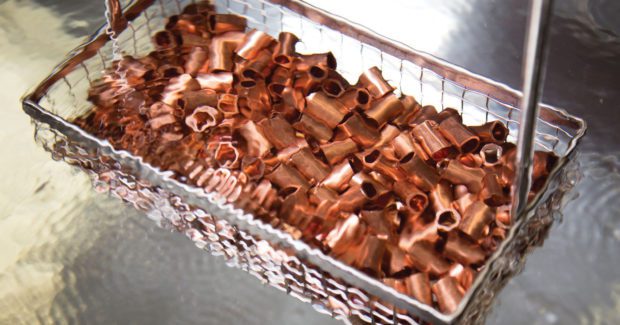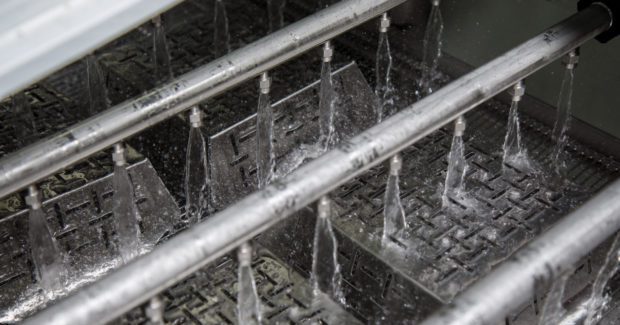Parts Cleaning – Aqueous or Solvent?
What you need to know before you choose.
Posted: March 31, 2022
In an industry where production time, volume, and quality are critical, it’s increasingly important to ensure your metal parts deliver the desired results and meet any specifications established by your end user. Since metal parts cleaning is fast becoming the industry standard, facility managers must become well versed in the cleaning processes and chemistry options that are available. To assure your cleaning process provides the performance level required, learning the differences between aqueous and solvent cleaning solutions and the advantages as well as disadvantages of each is the right place to start.
Cleaning performance is directly related to the selection of the cleaning equipment and the cleaning chemistry or solvent. It takes the correct machine/chemical combination to achieve maximum results.
Metal Parts Must Be Cleaned To:
- Remove oil, chips, fines, and other soils before moving to next operation
- Prepare substrate for coating or plating
- Meet inspection and cleanliness specifications
- Prepare for packaging/assembly
Soils and contaminants must be removed for a variety of reasons and/or guidelines set by manufacturers. Whether parts need to be cleaned to meet these standards or to be ready for the next step in the process, knowing your options will get you where you need to be.
General Aqueous Cleaning is simply using cleaning chemistry solutions that are water-based. These compounds can include additives (surfactants, solvents, acids, alkaline building agents, and inhibitors) to enhance the process performance or meet specific needs. When cleaning with an aqueous solution, flash rusting or corrosion can be a concern, however, modern-day chemistries incorporate rust preventatives (or RPs) into the solution or can be added separately in the rinse stage of the process. Aqueous cleaning chemistry concentrations range anywhere from 2-15% and are typically rinsed easily with water. KYZEN offers a wide range of chemistries designed for use with all types of aqueous spray and immersion washers.
General Solvent Degreasing is an existing process many manufacturers use today. Today’s cleanliness specifications for precision and critical cleaning indicates that most metal parts cannot have any contaminant residue or rinse water residue on the end product, thus increasing the interest in solvent cleaning agents.
It’s important to note that the use of solvent in manufacturing is growing, however, regulations to restrict traditional solvent choices are in the works and some have looming deadlines. In addition to the cleanliness specifications mentioned above, solvent cleaning processes provide expanded general material compatibility, ease of application, assured drying, lower energy consumption, a water-free process, and less floor space over aqueous systems.
Emerging New Solvents that contain no chlorine, bromine, or fluorine are called “modified alcohols” and “refined hydrocarbons.” These solvents are used in vacuum degreasers which drastically reduce solvent consumption as well as offers the operator maximum isolation from the process. These units are the lowest emissive loss degreasers currently available in the market.
New Solvents vs Old Solvents: There are several commonly used solvents in the industry. They range from low to high operational temperatures and types of chemical composition such as chlorinated, brominated, fluorinated, alcohols, and others. The main difference is environmental and health characteristics of the solvent. Most solvents (old and new) will clean; however, numerous solvents are being phased out or are becoming more regulated by the government because of personnel exposure limits and air emissions. Current traditional solvent users are evaluating more environmentally friendly solvents and processes in order to stay ahead of the phase-outs and provide a safer workplace.
Aqueous or Solvent? Knowing the advantages of each option will help you determine what process and chemistry will work best for you. A trusted source can help you evaluate the many different aspects and characteristics to develop your cleaning process. It is recommended that before selecting a new process, compatibility and efficiency testing should be performed. KYZEN can help you navigate your many metal parts cleaning choices, evaluate new processes, and help you to choose “the right chemistry” to improve your parts cleaning.





